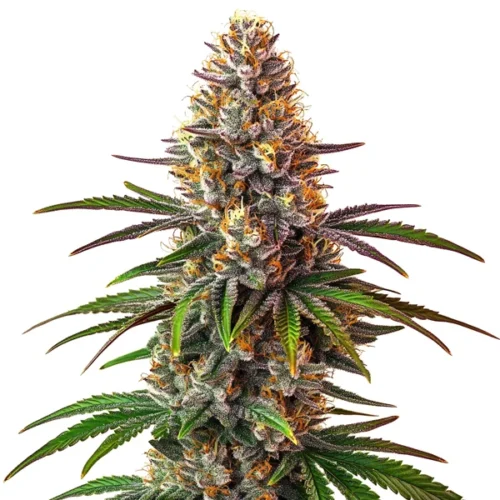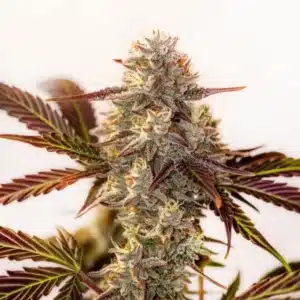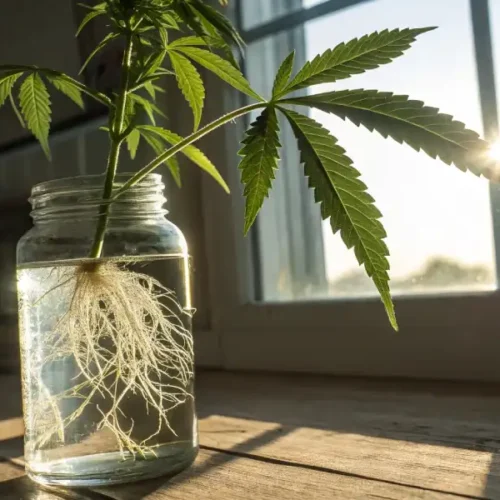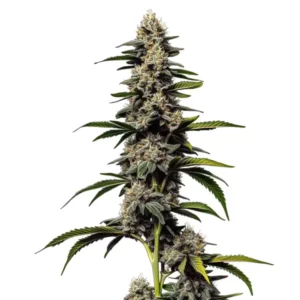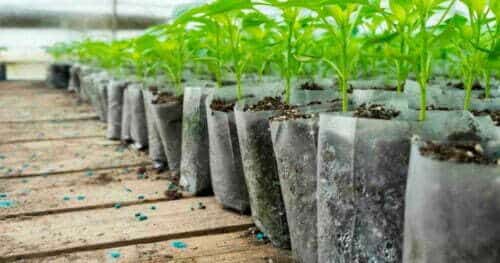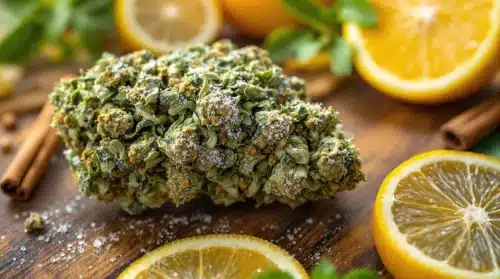First of all, we must say that the word hemp comes from the Latin “cannabum,” which is the common name of the Cannabis sativa plant. According to its scientific name, cannabis and hemp belong to the same family. However, when comparing Hemp vs Weed, ccannabis varieties such as Cheese Lemon Regular and Cake Bomb Regular stand out for their potency and flavor profiles, differing greatly from industrial hemp’s lack of psychoactive effects.
It is good to contextualize and say that the first confirmed data on hemp cultivation dates back to 4,000 BC in the territory that corresponds to the current China. From there, it would reach Europe through Persia, India, and Central Asia in the following millennia until it became one of the most important industrial crops. Meanwhile, cannabis strains like AK 47 Regular and Acid Diesel gained popularity in modern times for their high THC content, offering different effects compared to the non-psychoactive industrial hemp.
Recommended Strains
Cheese Lemon Regular
 THC: 18% - 22%
THC: 18% - 22% Type of seed: Regular
Type of seed: Regular Phenotype: Mostly Sativa
Phenotype: Mostly Sativa Day to flower: 10 - 12 weeks
Day to flower: 10 - 12 weeks
Cake Bomb Regular
 THC: 15% - 20%
THC: 15% - 20% Type of seed: Regular
Type of seed: Regular Phenotype: Mostly Indica
Phenotype: Mostly Indica Day to flower: 8 - 10 weeks
Day to flower: 8 - 10 weeks
Even the caravels of Christopher Columbus, Santa María, La Niña and La Pinta, had sails and ropes made of hemp. This shows that hemp was very important for navigation and the Spanish would be the first to bring hemp to America, although later the English, Dutch, Portuguese, and French would also introduce it in their respective colonies.
In addition, for centuries, both the recreational use of hemp through marijuana and food were limited to the Asian continent and its consumption was common in certain religious ceremonies, having a ceremonial and occasional nature. For example, cannabis strains like Asian Dream reflect the ancient lineage and traditions, maintaining their popularity in spiritual rituals and cultural settings. Finally, in the 20th century, the popularity of the variety of hemp that produced marijuana led to the control or prohibition of its cultivation in several countries around the world, including the United States and the European Union.
This occurred in 1961 when the United Nations placed hemp on a “black list,” resulting in a worldwide ban on growing the crop. For its part, THC (the psychoactive content that makes you fly) was discovered in 1964 and was added to the list of prohibited substances in 1968. After 20 years of these events, scientists in France, a country that has a strong tradition in hemp cultivation, developed strains with a very low THC content, allowing the plant to be reused for food, fabric, and building materials, etc. without legal complications.
This scientific development was accompanied by a struggle in the European Parliament, resulting in new regulations allowing countries of the European Union to cultivate industrial hemp with a maximum THC of 0.3%. Today, industrial hemp is defined as seeds with less than 0.3% THC (some countries set a maximum of 0.2%). Understanding Hemp vs Weed is important here—strains with THC levels below 0.3% are classified as hemp and are eligible to be registered in the Common Catalog of the European Union among the agricultural plant species that can be produced as an industrial crop.
Legal status of hemp in the USA
Under a new 2018 farm bill, the US government again allowed the production of this hemp species. Farmers can now grow the plant on a large scale. This is positive, even more so when studies suggest that hemp with the help of specific investments could substitute some less sustainable materials.
The US Constitution was written on hemp, an issue determined by the National Constitution Center, which admits that the drafts of these documents could well have been made on hemp paper because at that time, the plant was widely cultivated in North America for the manufacture of rope and sails. This historical use highlights an interesting aspect of the Hemp vs Weed conversation, as hemp was valued for its industrial applications rather than its psychoactive properties. George Washington and Thomas Jefferson, the country’s first and third presidents respectively and two of the founding fathers of the US, grew hemp.
Promos & Deals
What characteristics does hemp have?
Due to its multiple applications in this field, industrial hemp can be a very important renewable source of raw materials. It is a sustainable alternative for the ecology of the planet and very useful at an industrial and nutritional level. It is good to know that the structure of hemp is the result of a domestication process that dates back thousands of years in which humanity has been shaping the population to get the most out of the plant in order to produce oils, fibers, and cellulose which at an industrial level have multiple uses. Morphologically, hemp tends to be taller than marijuana and can reach up to 5 meters in height. Hemp stems are thicker, less hollow, do not have as many branches as those of marijuana plants, and they hardly have flowers. However, the morphology of hemp also varies depending on the purpose of its cultivation.
Here, we can differentiate different types of plants or varieties of hemp. For example, the hemp varieties grown for fiber which are tall plants with heights ranging from 2 to 5 meters high with large internodal spaces. They have little branching from the central stem and are bred in dense crops where there is very little space between one plant and another. In turn, we can find the varieties of hemp cultivated to obtain seeds. Hemp grown for this purpose resembles marijuana but has fewer branches and fewer flowers. It is also grown in very dense crops. Lastly, there are the varieties for the purpose of extracting oil and cellulose which are cultivated for this purpose and are characterized by having a thicker or denser stem.

Main differences between Hemp and Cannabis
As we have indicated previously, there are a large number of hemp varieties, always within the cannabis sativa subtype. One of the characteristics of this plant is having a percentage of THC that is lower than that of marijuana plants. When exploring Hemp vs Weed, it’s important to note this key difference in THC content, which influences their legal status and usage. As we already told you, the discovery of the French researchers who created low-THC hemp seeds definitely revolutionized the panorama. With this, industrial hemp is born, used both in the textile and food industries, among others. Both male and female plants are used in industrial hemp crops. In fact, hemp seeds, which appear after the fertilization of its flowers, are one of the most nutritionally interesting foods that currently exist, especially for vegan diets due to their high protein content.
Another substantial difference is in the structure of the plants because hemp does not develop foliage with large buds. In general, its branching is dense but without so many flowers. For its part, cannabis tends to have less foliage but more flowers which makes it more attractive to growers looking for flowers for personal consumption. Another difference is the cultivation methods between hemp and cannabis. As we pointed out before, the first can be cultivated in a dense way, that is, with many plants next to each other without much space. On the other hand, cannabis, when cultivated, requires space between each plant in order to achieve good growth and flowering and to avoid having problems between the specimens of a crop.
Some advantages of hemp and its cultivation
As we will tell you later, hemp has some excellent nutritional properties that help maintain the health of the human body. However, that is not all because this plant is also perfect for maintaining the health of the soil where it is grown. The resistance of hemp to most pests and microorganisms means that the use of pesticides or pesticides is not necessary and it can be grown in a completely natural way.
For this reason, the ecological certification of its crops is easier than in other grains. Furthermore, hemp does not need fertilizers and can grow even in eroded soil. Another point is that this plant is quite effective when it comes to eliminating toxins from the soil, recovering it completely. Water consumption is also lower than that of other plants such as wheat, corn, or cotton. For this reason, it is also beginning to be used for the manufacture of biofuels. Hemp is one of the most versatile plants that we can find today with great utility and great nutritional properties. In short, hemp is a plant that is very easy to love with great importance in history and is once again taking on the predominant role it needs thanks to its properties and its ease of cultivation.
Main hemp uses
Hemp can be used as a food product because hemp seeds and oil are not only suitable for consumption but also have a high nutritional value. In fact, hemp oil is rich in polyunsaturated fatty acids, especially linoleic acid (Omega-6) and alpha-linolenic acid (Omega-3). These two fatty acids have been shown to have very beneficial properties for the body. In addition, hemp seeds and oil also contain gamma-linolenic acid, which is used to treat ailments such as neurodermatitis, arthritis, and premenstrual syndrome. When exploring Hemp vs Weed, it’s important to note that while both come from the cannabis plant, hemp offers significant nutritional and therapeutic benefits without the psychoactive effects associated with weed.
Hemp can also be used as a base element in industrial production because like flaxseed oil or cottonseed oil, hemp seed oil can be processed into countless products such as biodiesel, soap, cosmetics, paints, and varnishes. Another use of this plant is for the production of cellulose and biodegradable plastic because the woody center of hemp stems and bark can be used to make paper and biodegradable plastic. The fact that it is a renewable and environmentally friendly material makes it very attractive and competitive, especially due to the serious ecological problem that plastic is causing on the planet.
The star of the by-products of these plants, “hemp fiber” stands out for its natural resistance and is obtained from the stems of the plant. This element can be the basis of recyclable and biodegradable textiles, clothing, canvas, rope, and construction materials. The strength and durability of hemp fiber cannot be matched by any other natural fiber. Hemp rope and canvas have been used for thousands of years in all types of boats due to their durability and resistance to deterioration caused by salt from seawater.
Nowadays, hemp fiber textile products are considered an environmentally friendly alternative compared to cotton because it needs a large amount of pesticides and other toxic products. Due to its porosity and absorption power, fabrics made from hemp are easily dyed and are compatible with natural dyes based on plants and minerals.
Natural fibers in composite materials are also gaining ground over synthetic ones, especially in the automotive sector, as they offer the same performance and higher impact resistance. The aerospace industry has also set its sights on composite materials with natural fibers due to their low toxicity in case of fire.
The main uses of cannabis
The recreational use of cannabis is well known, thanks to its psychoactive effect produced by THC. This has led to pot being the most consumed illegal drug in the world. Since ancient times, this effect has been used for multiple rituals as well as traditional events in different cultures. Today, millions of people use cannabis to relax, to have a laugh with friends, or simply to enjoy the psychoactive effects of the plant, despite the fact that in recent decades, efforts have been made to raise the THC levels of the plant through hybridization and selection of different cannabis genetics. When discussing Hemp vs Weed, it’s important to note that while weed is often cultivated for its high THC content and recreational effects, hemp is bred for industrial uses with minimal psychoactive properties.
As CBD-rich cannabis seeds have also appeared on the market, this has led to the new recreational consumption model focusing on a more sustainable use that is achieved by raising CBD levels and reducing THC levels a little so the psychoactive effect is not extreme. At Blimburn Seeds, you can find the largest variety of marijuana seeds for sale that are rich in THC and CBD.
There is also the medicinal use of weed. This has been supported by many scientific studies that confirm the medicinal properties of cannabis. Our ancestors already used this plant to treat multiple ailments and today, it has proven to be very effective for the treatment of various diseases such as epilepsy, neurodegenerative diseases, and even autism.
The medicinal use of cannabis has promoted a market around Cannabidiol or CBD as it can be seen that the demand for CBD, which comes from low-THC hemp plants (as stated above), has proven to be effective in the treatment of some of the diseases already described and additional health problems. As a result, the CBD market has grown exponentially in recent years, accompanied by a lot of hype. CBD is derived from hemp or cannabis plants with a high percentage of CBD.
To finish, we tell you that there is still a long way to go and we do not know what the future holds for us. But without a doubt, growing your own cannabis plants is one of the best decisions you can make and here at Blimburn Seeds, you can buy a gigantic variety of cannabis seeds for your garden or farm. Do not forget that the best weed you can smoke or consume medicinally is the herb that you grow with your own hands. See you on the next blog!

FAQs about Hemp vs Weed
What is the difference between hemp and cannabis?
Hemp vs Weed is a common topic of discussion, as both belong to the Cannabis sativa family but differ in THC content and use. Hemp contains less than 0.3% THC and is used for industrial purposes—such as textiles, paper, food, and biodegradable plastics—without psychoactive effects. In contrast, cannabis strains like Cheese Lemon Regular or AK 47 Regular have higher THC levels and are cultivated for recreational or medicinal use.
What are the main industrial uses of hemp strain?
Hemp is incredibly versatile. It is used to produce textiles, ropes, biodegradable plastics, paper, biofuels, and construction materials. Hemp seeds and oils offer high nutritional value and are rich in Omega-3 and Omega-6 fatty acids. Hemp fiber is known for its strength and durability, making it an eco-friendly alternative in the textile and automotive industries.
Is hemp cultivation legal in the USA and Europe?
Yes. In the USA, the 2018 Farm Bill legalized industrial hemp cultivation. In Europe, hemp cultivation is allowed under EU regulations as long as THC levels do not exceed 0.3% (0.2% in some countries). Hemp grown today is used for food, fabrics, and sustainable materials, thanks to modern low-THC varieties developed by European scientists.


